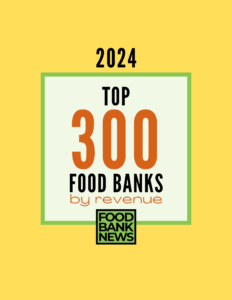As is the case when any new administration comes into office, changes to existing government programs can be expected. To those working in hunger relief, the future of the Farm Bill is of particular importance since it governs SNAP, the federal nutrition program that gets food to more than 42 million people each month. According to Feeding America, SNAP is nine times more impactful in addressing food insecurity than the Feeding America network itself.
The current five-year Farm Bill was passed in 2018 and extended through the end of September 2024 when legislators could not agree on a package of reforms in time for the September 2023 deadline. As things stand now, some programs will expire at the end of December 2024 and start to revert to older versions of the law, unless the bill is either extended again or signed into a new law before then.
Expectations are not high that a new bill will get passed before the end of the year, even though Senate Agriculture chairwoman Debbie Stabenow released her most recent draft earlier this week. Ellen Nissenbaum, Senior Advisor at the Center on Budget and Policy Priorities, speaking last week at the Hunger Free Communities annual summit, pointed to “a number of Republican statements” that a one-year extension of the current Farm Bill is likely. “Why would they do a one year extension?” Nissenbaum asked. “Because Republicans will control the House and Senate next year. They will have more power, and therefore they believe they can produce a Farm Bill that is more to their liking.”
One point of contention over the current Farm Bill relates to the Thrifty Food Plan, which is the method used to calculate SNAP benefits. In the 2018 Farm Bill, the Thrifty Food Plan was updated for the first time in 50 years to reflect current food prices and dietary needs, resulting in a 21% increase in SNAP benefits per person.
“What Republicans have proposed in the House Farm Bill and what many Republicans in the Senate are also supporting is to say, ‘We’re not going to touch the update that happened that boosted SNAP benefits, but we are going to ensure that future updates cannot have a cost,’” Nissenbaum said.
According to the Center of Budget Policy and Priorities, this “cost-neutral” approach to the Thrifty Food Plan would ultimately result in a roughly $30 billion cut in benefits for all SNAP participants in future years. According to a report from the Center, “This would be the largest SNAP cut in nearly 30 years and would grow over time as SNAP benefits became more and more inadequate.”
Another question is whether protections against “card skimming” would remain in place under a new farm bill. Currently, states are required to replace benefits that have been stolen through criminal efforts that take advantage of the outdated card technology used to distribute SNAP. The USDA says that states have already replaced $53 million of stolen SNAP benefits, a figure that likely falls far short of the full amount stolen, given that many thefts likely go unreported.
The Farm Bill is not the only legislative mechanism that could have an impact on SNAP. According to Nissenbaum, leaders of the new Congress are likely to advance a new budget through a process called reconciliation, which fast-tracks legislation by lowering the standard 60-vote threshold in the Senate to a simple majority. The reconciliation process would be focused on extending the Trump tax cuts of 2017, but could also include provisions that would cut SNAP benefits, Nissenbaum said.
Debt ceiling negotiations present another potential vehicle that could impact SNAP. In the past, for example, increases in SNAP work requirements were passed in order to reach a debt ceiling agreement and not default, Nissenbaum said. Other programs like Medicaid are also at risk of undergoing change through a variety of vehicles. “We don’t want to focus just on SNAP,” Nissenbaum noted. “If there are harmful cuts and changes to Medicaid, then people may not have as much for food.”
Threats to SNAP include changes to its structure that could be difficult to undo down the line. Currently, SNAP is an entitlement program that is available to anyone who qualifies. Its impact could be limited by making it more difficult for people to qualify, or by converting the program to a block grant. Said Nissenbaum, “Throughout the year, we will see vehicles that are moving to which SNAP cuts and changes could be added, starting with this tax reconciliation bill and then moving to dealing with the debt ceiling.” – Chris Costanzo
Like what you’re reading?
Support Food Bank News









